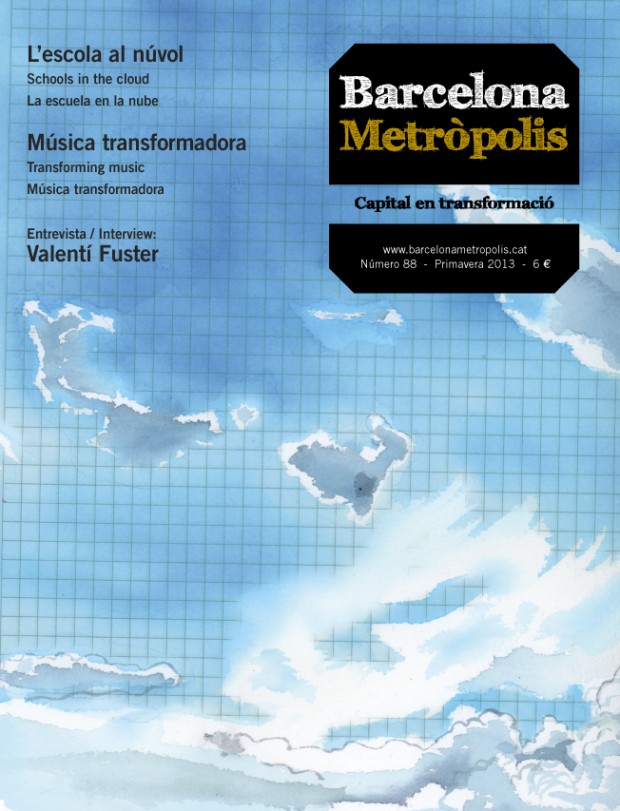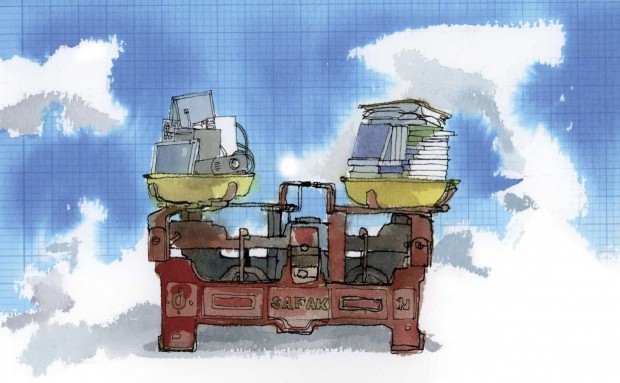The incorporation of ICT into classrooms must pursue very clear objectives, with a preliminary study of student needs to strike the right balance between pedagogical, technological, organisational and contextual elements. Permanent connectivity is not a value in itself, but the opportunities of communicating with each other and of cooperating are, particularly the active involvement of students in their own learning.
In early March, in Barcelona, Zygmunt Bauman began a talk on education with the explicit statement, “I have no recipe. History does not move forward until we make it do so. The future belongs to young people.” And he ended with the blunt words, “You are doomed to live very interesting times. I hope you work towards change.” Despite the many uncertainties that Bauman made no attempt to dodge during the conference (and all the other ones that he expresses in Educational Challenges of the Liquid-Modern Era), the sociologist’s point seemed impeccable to me: if you – he seemed to be saying to the audience in attendance and to those who, like myself, were listening via streaming thousands of kilometres away – have come because you want me to give you an easy recipe that can be applied safely and immediately, then you have come to the wrong place; it would be better for you all to get down to work, watch the boys and girls in your classrooms, see what they need and, by trial and error, you will gradually get some answers (not all of them nor always the same ones). He said all this with a certain nod to his own generation, because both Bauman and almost all his audience that afternoon were newcomers to the Internet; i.e. people who were born before it was invented, and therefore individuals who will never cease to enthusiastically defend what we loved most about a world where the Internet did not exist (to understand these emotional attachments, simply add the historical insight and then reread what was said when the mass press, radio or television were invented).
This change of perspective, if we focus on the use of ICT in the classroom, is as much a question of common sense as it is difficult to include in our daily lives. The desire to overcome previous limitations and experiences calls for humility to set aside the easy debate between the apocalyptics and the integrated, and modesty to accept that we do not have all the answers, since we are only just beginning to ask questions. We also need to accept that the Internet has taken from us, the teachers, the privilege of being the main transmitters of information, and while we may find this vexing, we must acknowledge that much of the content that our schools sought to convey to us is now either obsolete or basically useless. Much, but not all of it, of course. For some time now, educators like Pere Marquès and his research group at the UAB have been looking into the question of what content is basic, and therefore still needs to be memorised, and what content is best acquired with practice, through ICT. By combining them, they have put forward the “bimodal curriculum”, which seeks to find a balance between the individual acquisition of basic content (e.g. vocabulary) and the performance of team-based tasks to achieve goals set by teachers and promote new, creative ways of selecting, organising and using the available information and documentation resources.
Despite these changes, it is the teachers who continue to define the rules of the game – the incorporation of ICT into classrooms must pursue very clear objectives, with a preliminary study of students’ needs to strike the right balance between educational, technological, organisational and contextual elements. In the classroom, permanent connectivity is not a value in itself, but the opportunities to communicate and cooperate (which increase exponentially) are, and particularly, the active involvement of students in their own learning which, with appropriate methodologies and technological tools, children adopt when they start to work collaboratively.

The introduction of ICT means that the approach to work in the classroom will need to be constantly updated. In the photo, a student at Pere Vila School experiments with his laptop.
When Salman Khan published the first videos of the future Khan Academy, he could hardly have imagined that making short audiovisual recordings of units of the school curricula and making them accessible via the Internet to be viewed anytime and anywhere would pave the way for one of the new learning methodologies that have begun to turn the traditional classroom on its head – first of all students, following the teacher’s personalised instructions, become familiar with a topic, studying the basic concepts on their own with the help of all kinds of resources and relationships with the other networked learners. Once these basic skills have been acquired, and with on-line monitoring by teachers, the class becomes a space which promotes group experimentation, where projects and tasks are developed in collaboration with other classmates and with the teacher. This is reflected in tools such as PLE (personal learning environments) and helps to bolster the skills that will allow each learner, in the future, to take the right decisions and effective action for any personal or professional challenge.
Salman Khan, like so many teachers around the world who explore the potential of ICT in education on a daily basis, know that as of now the way we work in the classroom will have to be constantly revisited. However, if one thing is certain, it is that we are moving towards a more social and collaborative type of learning characterised by greater student involvement in the learning process and the development of what are now basic skills, such as communication and teamwork, increased student satisfaction and better training of students to become critical citizens. However, the number of resources and relationships that the Internet has brought us also requires us to rethink our own skills as educators. If we accept, according to Bauman’s approach, that we will have to retrain constantly in the course of our professional lives, ICT also delivers us a more collaborative and horizontal type of learning, where a core element of the process is our peers – colleagues who work alongside us or at the other end of the world, with whom we interact via virtual environments which, with different degrees of formalisation, promote the exchange of information, ideas, knowledge and experiences (best practices). Catalonia has solid examples of this, such as l’Associació Espiral, Espurna and eduCAT 2.0. At the UOC, research into e-learning conducted in recent years is opening up a new concept of the university where the plural and diverse community it is comprised of is constantly learning thanks to the interaction between all its members and the constant feedback generated throughout all types of networks, from the more formal ones typical of an undergraduate or postgraduate scenario to those emerging from common interest groups such as Projecte Lletra, which collates the knowledge of the different agents of the Catalan literary system in a virtual environment sponsored by the University for the benefit of society at large, or the recently established Mestresclass (www.mestresclass.cat), where the expert university community cooperates with Ara, a media publication that is very active on the Internet, to promote the exchange of knowledge between Catalan teachers of all educational levels (from specific syllabus content to good teaching practices successfully developed in their own classrooms). All this with a new audiovisual language which, in the coming years, will be pivotal in consolidating an innovative, high-quality educational Internet for Catalonia.





Pingback: L’escola. De la crisi a la revolució | Núvol